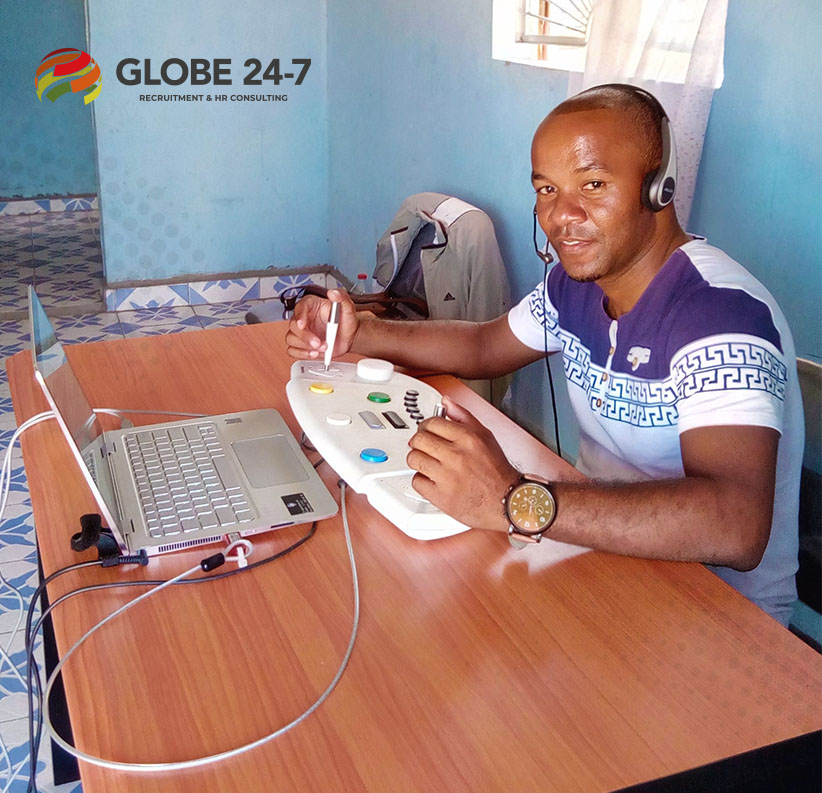In the mining industry, psychomotor tests are often used as part of pre-employment assessments to measure a candidate’s cognitive and physical abilities relevant to job performance.
The Dover Test System is a series of psychomotor tests that evaluate a person’s coordination, dexterity, reaction time, spatial awareness, and overall motor skills. These tests are designed to assess an individual’s aptitude for tasks that are essential in many mining-related roles.
What is Dover?
Dover is based on the Vienna Test System, a system for computerised psychological assessments. These types of assessments are used in many fields, for different purposes. Dover was developed specifically for the mining industry, with the following important characteristics:
- The test is culture fair, i.e. free of cultural bias
- The candidate doesn’t require previous exposure to computers
- The candidate doesn’t need to be literate
What does Dover measure?
Dover is mostly a competency measurement tool that evaluates fundamental practical skills including:
- Hand-eye-foot coordination
- Reactions to stimuli in various environmental conditions
- Auditory discrimination
- Estimates of the speed/direction of moving objects
- Basic decision-making abilities and concentration levels under monotonous circumstances
It’s a useful pre-screening tool, but like all selection methods or tools, it shouldn’t be used in isolation. We recommend you use it in conjunction with other procedures like interviews, literacy or cognitive assessments, practical tests, and background checks.
Dover can also be used as a tool to reduce risk and reduce accidents. The tests identify participants’ weak or problematic areas within their fundamental skills. Identifying these gaps helps you design or choose the appropriate training to improve their weak areas. This reduces the risk of accidents, production losses, and losses of equipment.
It’s an objective assessment that adds another dimension to the selection process.
What does Dover test?
The Determination Test
This looks at basic reactive functioning, assuming how candidates will respond to stimuli in various environmental conditions including normal, crisis, and crisis-recovery conditions. Candidates respond to visual and auditory stimuli using hand-eye-foot coordination to accomplish this.
Time Movement Anticipation
This test assesses the candidate’s ability to estimate both the speed and direction of moving objects, such as other vehicles on the road.
Two Hands Coordination
This test looks at basic manual coordination using both hands together, focusing on speed and accuracy. Basic practical trainability potential (the assumed speed at which new hands-on skills can be learned/acquired) is also assessed.
Signal Detection
This test assesses the candidate’s ability to maintain concentration and respond to environmental stimuli in routine or monotonous conditions (such as a long-distance road trip or doing repetitive daily work).
Cognitrone
This test looks at the candidate’s basic environmental shape recognition ability combined with basic decision-making ability (e.g. their ability to recognise road signs, stop at street intersections, and make appropriate decisions in time).
In summary, the Dover system is particularly well suited for people working with moving machinery or tools, people operating vehicles, supervisors, and anyone involved at the production level of a mine.
The Results
Dover’s assessment results categorise candidates into three main groups:
GOOD
These individuals can complete more involved tasks and operate complex systems.
AVERAGE
These individuals can complete moderately involved tasks and operate uncomplicated systems.
POOR
These individuals can complete basic routine tasks and operate basic uncomplicated systems.
This is extremely useful, immediate, and efficient. If you need to distinguish within each of these categories, the results are also summarised by a total score (for example 81 A, 96 A), providing an easy way of selecting those with the best chance of success.
You can view the results independently by test. This is extremely useful for deciding on necessary training.
Dover used in practice
We’ve worked with multiple clients using the Dover tests in Asia, Africa, and South America across various languages, cultures, and education levels. In each case, the clients have had great success using it. It’s an objective assessment that adds another dimension to the selection process.
It’s worth considering if it’s right for your remote or overseas mine site team. If you’re unsure, contact on of our HR consulting specialists who would be happy to discuss your needs and offer practical advice.

